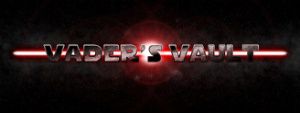No idea if this has been tried - I searched extensively here and elsewhere on the net - but an idea I've been toying with for a while in my head has been this:
We all like Makoto style blades. Sure, we aren't all going to go to the effort of making one, but using them as a starting point...
If you had 2 strings of LED's inside the blade, such as the v3 super blade Makoto showed us - but had only one of them hooked up to whatever board or driver you're using, you could use the other string for flash.
This is where the idea gets more complicated. And perhaps, with what we have at the moment, a bit ugly. So you do the clash string in segments of 10 LED's. Fairly normal. Just before LED 1 of each segment, you attach a clash sensor. The sensor acts as a switch to turn just that bank of LED's on. So normally it would all be off. When the corresponding part of the blade is hit, the clash sensor of that part turns on the LED segment attached.
What I'm not too sure about at the moment is these two points:
How sensitive the clash sensors that are available are. The ones for our soundboards are generally designed to "feel" a clash anywhere on the saber - so even with the wiring done this way, all the segments might light up at the same time anyway. We'd need something LESS sensitive. Which I'm thinking might have to be bigger, unfortunately. I'm not even sure you can get them to be as un-sensitive as would be needed.
How long the clash sensor closes the circuit. By nature, they're a momentary thing - so even if it did make the LED's flash, would we see it? There would have to be a way to use the clash sensor to close another switch, that stayed open for x milliseconds. I'm sure there is one - but in the space of a blade? Trying to keep out of the way of the light? That I don't know.
Issues that I can see at this point are as mentioned - components other than LED's in the blade make dark spots. Everything that wasn't an LED would have to be seriously tiny, and wired up very well.
And if you wanted to run the flash from an aux button in addition - then the clash sensors would prevent that.
It gets to being a LOT of wiring, but maybe it could be done thusly -
Current goes to the (hopefully tiny) clash sensor in the blade, then back down to the hilt. The hilt has the timed switch activated by the clash sensor in it. Current then goes back into the blade to that clash sensor's LED bank. Bank lights up and current comes back down the common anode.
With the clash activated switch being in the hilt, it could be possible to wire the aux switch to bypass the clash sensor's activation. Then we'd retain our aux button clash.
Please note - the idea is that the other string in the blade, the non-clash flash one, would be driven exactly the same as you would normally set it up - so with a Makoto board, CF, MR, driver, direct... All of my thinking here is ONLY involving the wiring of the clash flash LED string - to supplement the normal blade.
If this all worked, potentially you could have a driver board controlling each of the clash flash string segments individually as well as all of this - to make a flickering blade in segments, instead of just all of it flickering in time.
It does sound like a major headache whichever way you look at it though lol!
Any thoughts on the feasability of this concept? I'm not very electronically minded (as yet) so don't really know if I'm sprinting a marathon across lava before I can crawl.






 Reply With Quote
Reply With Quote
 Don't mind me...
Don't mind me...










Bookmarks